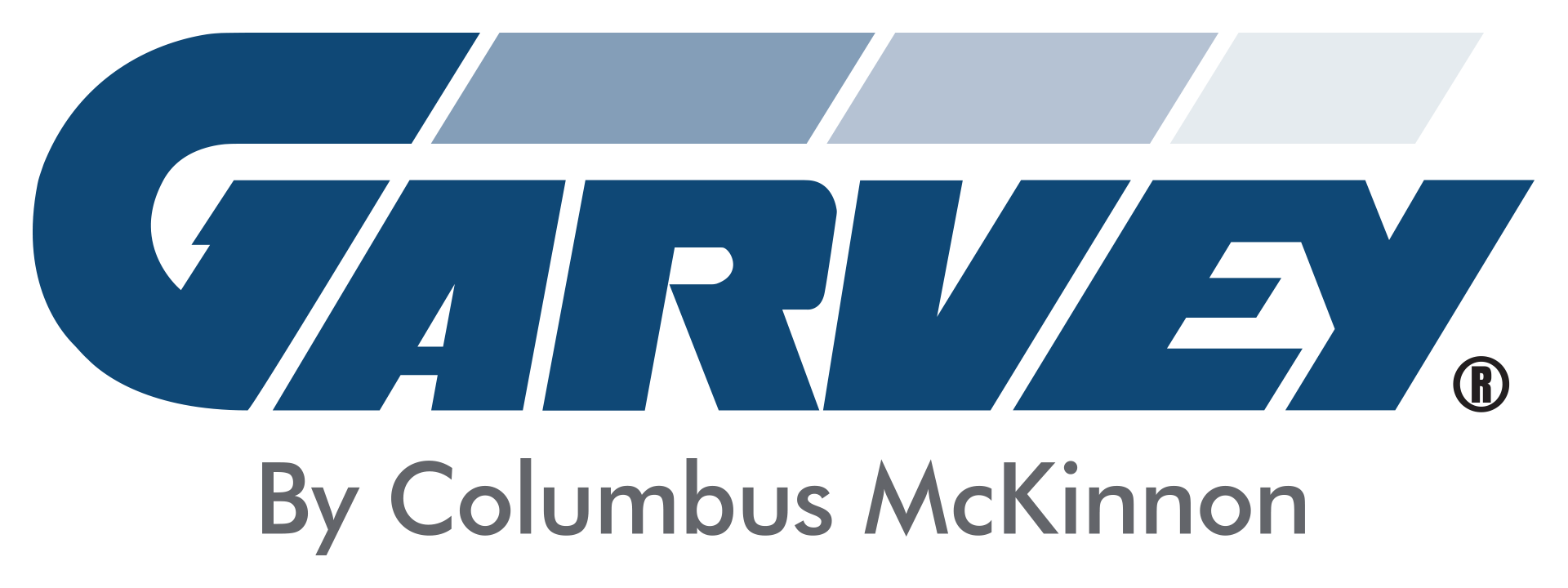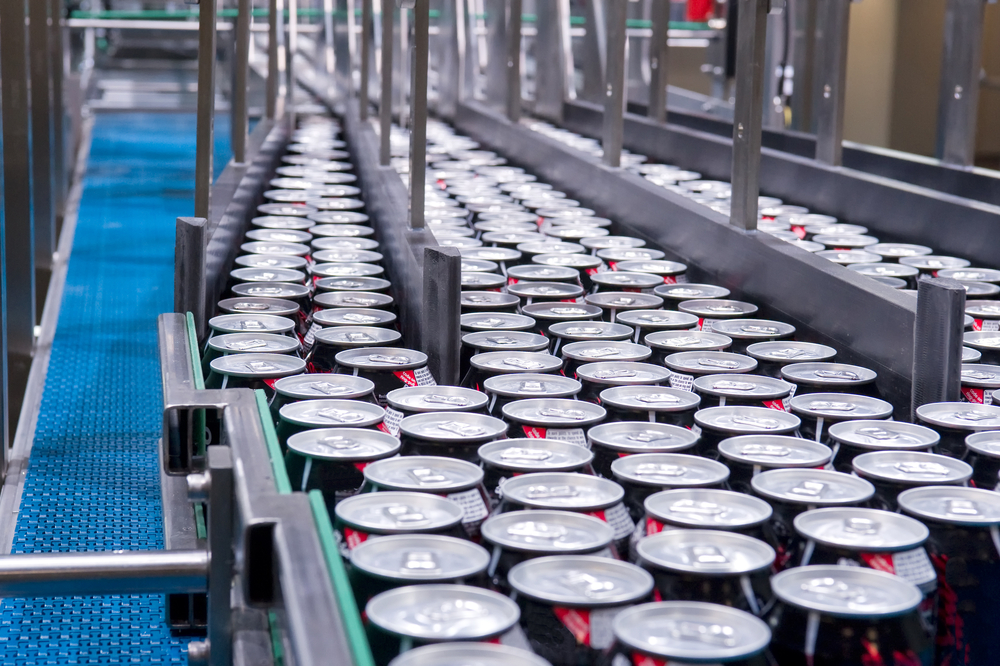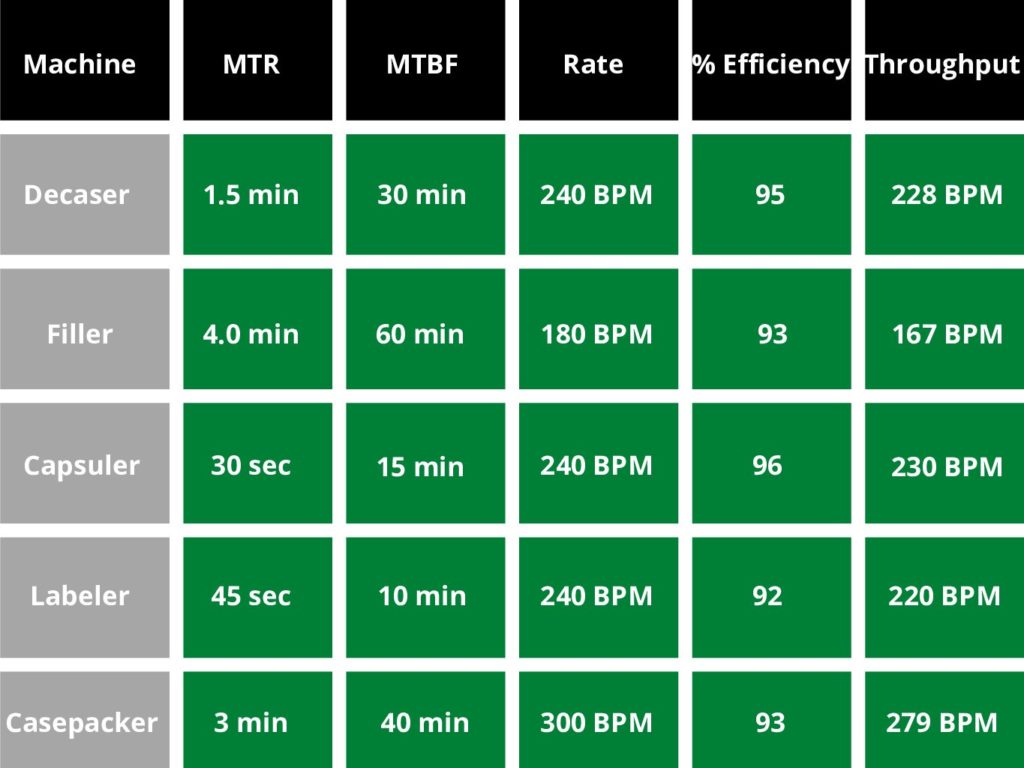Understanding how your production line operates and flows is essential to maximizing your throughput. Every production line is unique, but one thing is true among all production lines:
You have to go through a series of machines to get to the final product.
This means all your machines are interconnected and must be running simultaneously to produce and package a product. If one machine goes down, your entire production line could shut down until the machine is back up and running.
But there’s a significant challenge here. Every machine has its design rate and efficiency level, making it difficult for line managers and teams to accurately calculate the entire production line’s efficiency and identify ways for improvement.
This challenge is compounded by the fact that managers and technicians constantly work throughout the day to put out fires and reduce downtime. It can be difficult to take a step back and assess how to keep the entire line running smoothly.
This is where we can help.
Garvey specializes in increasing throughput by looking at every part of your line and understanding how it works.
Through our line analysis and subsequent recommendations, we have helped manufacturers increase their throughput by up to 30%.
How is that possible? We will explain how we approach analyzing your line by calculating your line’s efficiency and using the Theory of Constraints to determine if accumulation is a way to keep your line moving.
What is the Theory of Constraints?
A chain is only as strong as its weakest link. If you have a chain and pull it from both ends, it will only break at one spot. This analogy applies to the Theory of Constraints, a management approach focusing on improvement.
By identifying the constraint (or your line’s weakest link), you can understand the maximum output of your line to determine the next steps.
For example, we usually say that you want your constraint to be your most expensive machine on the line. If it isn’t, replacing or upgrading the current machine might make more sense to increase profitability.
Remember, your line’s throughput can never be higher than your constraint’s. You want to ensure your constraint runs as often as possible to increase throughput.
How does Garvey identify your constraint?
During a line analysis, your line consultant will ask you various questions about each machine on your line. These questions are designed to calculate each machine’s efficiency and net output and identify where the constraint is. They will include the following about each machine:
- What is the mean time to repair (MTR) the machine?
- In an hour run time, what is the mean time between failures (MTBF)?
- What is the machine design’s rate?
Having these figures available, your line consultant will calculate the efficiency and throughput of all the machines on your line. Here is a sample of what those figures could look like:
In this example, the filler has the lowest throughput, which makes it the constraint. You can calculate throughput by multiplying the machine’s design rate by its % efficiency.
As the filler is usually the most expensive machine on the line, we are in business and can move forward on ways to keep it running. We will aim to get the line’s throughput as close to the 167 bottles per minute (BPM) figure as possible.
How to calculate the output of the entire line?
Machine interactions compound efficiency. We need to multiply each machine’s efficiency to calculate the line’s total efficiency.
95% x 95% x 96% x 92% x 93% = 72.5% efficiency
We can then multiply the constraint’s throughput by the line’s efficiency to calculate the line’s current throughput.
167 BPM x 72.5% = 130 BPM.
In our example, the line’s total throughput is 130 BPM. As we already determined that our constraint’s maximum throughput is 167 BPM, we have an opportunity to increase the line’s throughput and maximize revenue.
How does accumulation increase throughput?
Accumulation systems are designed to create buffers when a machine goes down to prevent having to shut down the entire line. Remember, we want to keep the constraint running as much as possible.
By adding one or more accumulators on the line, you can avoid shutting down the constraint as you get your other machines back up. This can get the line’s throughput as close to the constraint’s maximum throughput as possible. Again, we will use our example to show you what happens when adding accumulation.
Original Production Line
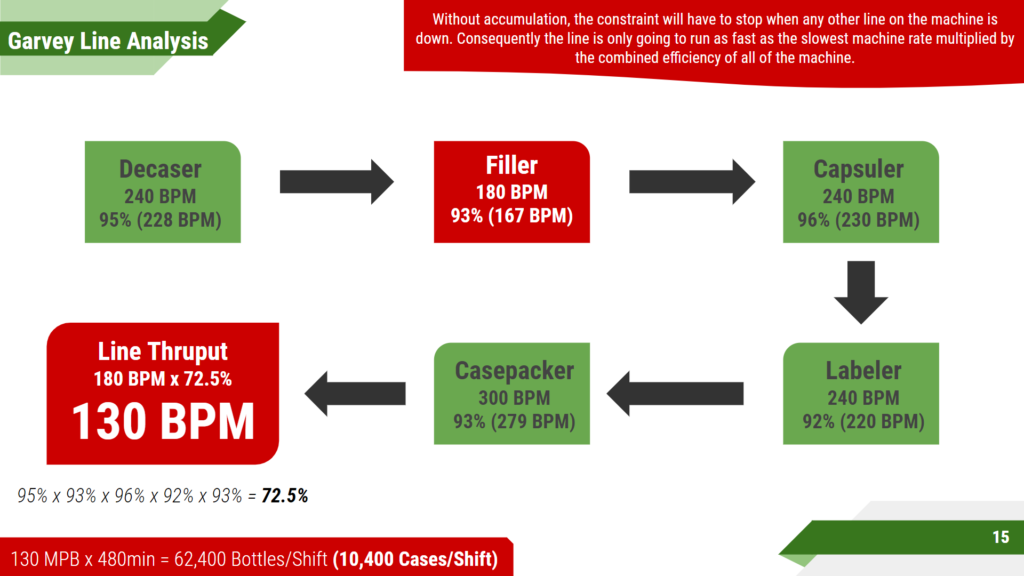
Adding Two Accumulators to the Line
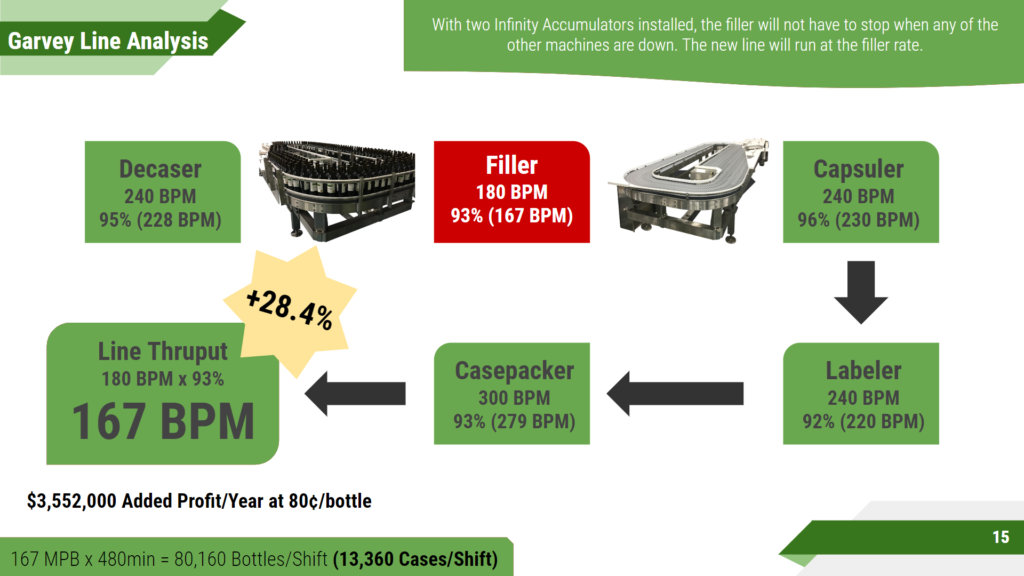
What does this mean for overall revenue?
Let’s say your profit is 80 cents a bottle. By going from 130 BPM to 167 BPM, you’re producing 17,760 more bottles per shift. This equates to the following increases in profit:
By shift (8 hours): $14,209
By week (5 shifts): $71,040
By year (50 weeks): $3,552,000
You read that right. By keeping your constraint running through accumulation, you can increase your profits by more than $3.5 million in this example.
Schedule a line analysis to maximize your throughput
When we visit your facility, we will get to understand your line and facility to see if you could benefit from adding accumulation to your line. In many cases, the answer will be yes, but we will let the math determine that.
We offer a tool to calculate your line efficiency if you want to get started before your line analysis. You can access our Line Efficiency Calculator here.
As each line is different, there are a few scenarios where accumulation won’t be recommended because of spacing, costs, machines, etc. If this is the case, your line consultant will provide additional recommendations based on your specific challenges and opportunities.
But we hope you understand better how the Theory of Constraints works and how it can be applied to your production line. Most of the time, you can exponentially increase throughput by addressing those short periods of downtime that happen throughout the day.
You can see a significant increase in throughput and revenue when you minimize shutdowns of your constraint due to non-constraint equipment issues. We encourage you to schedule your exclusive line analysis today to get started.



